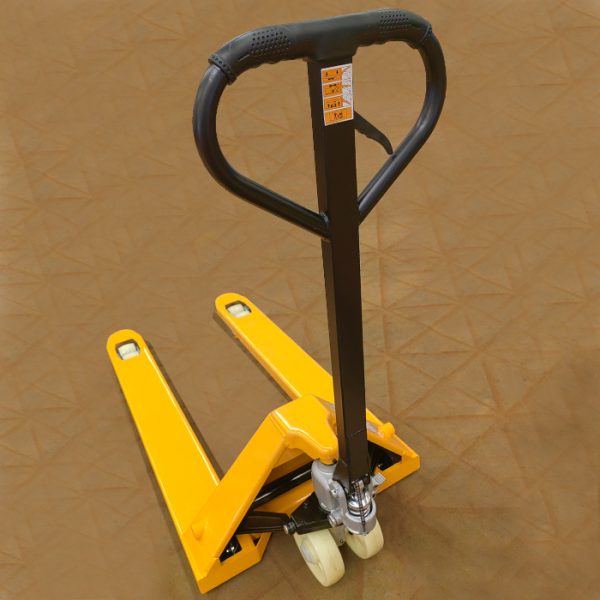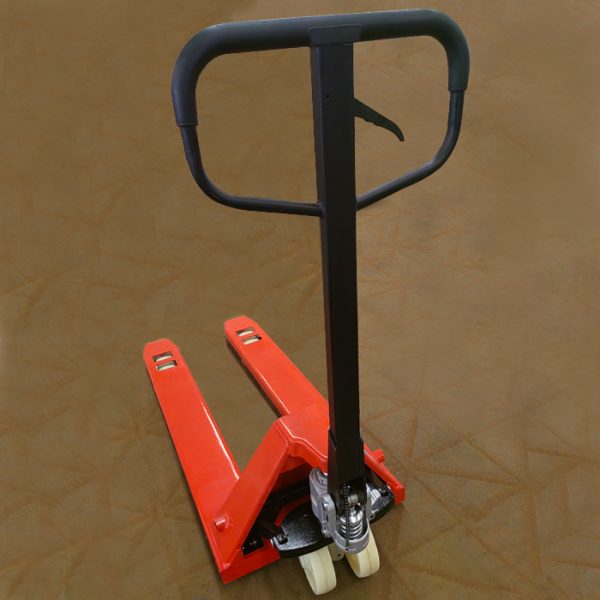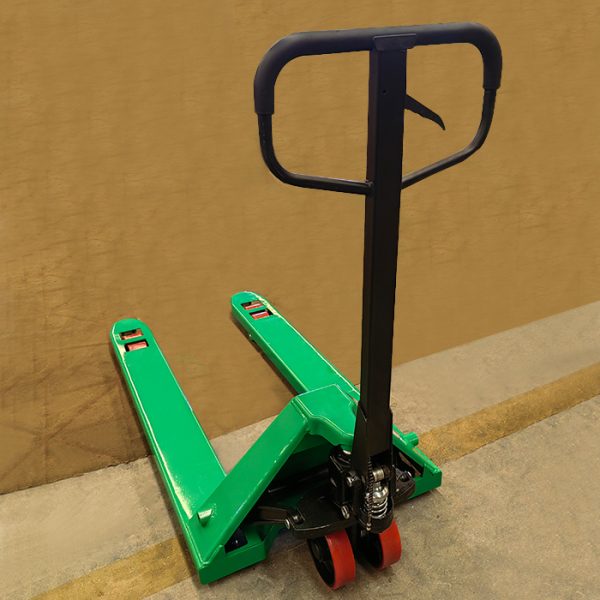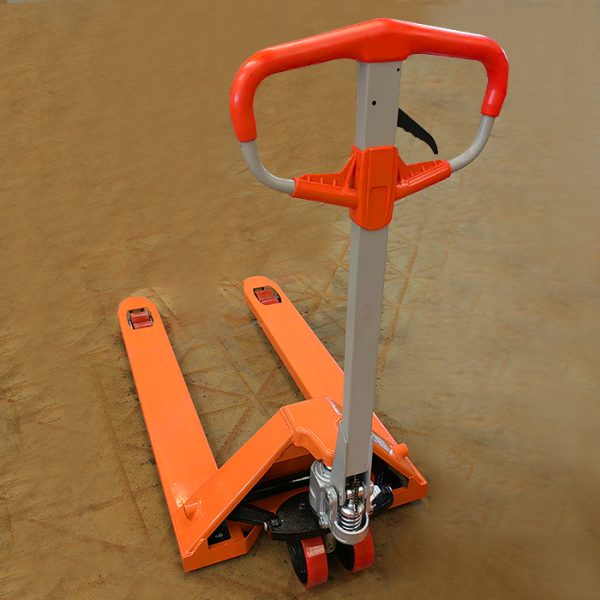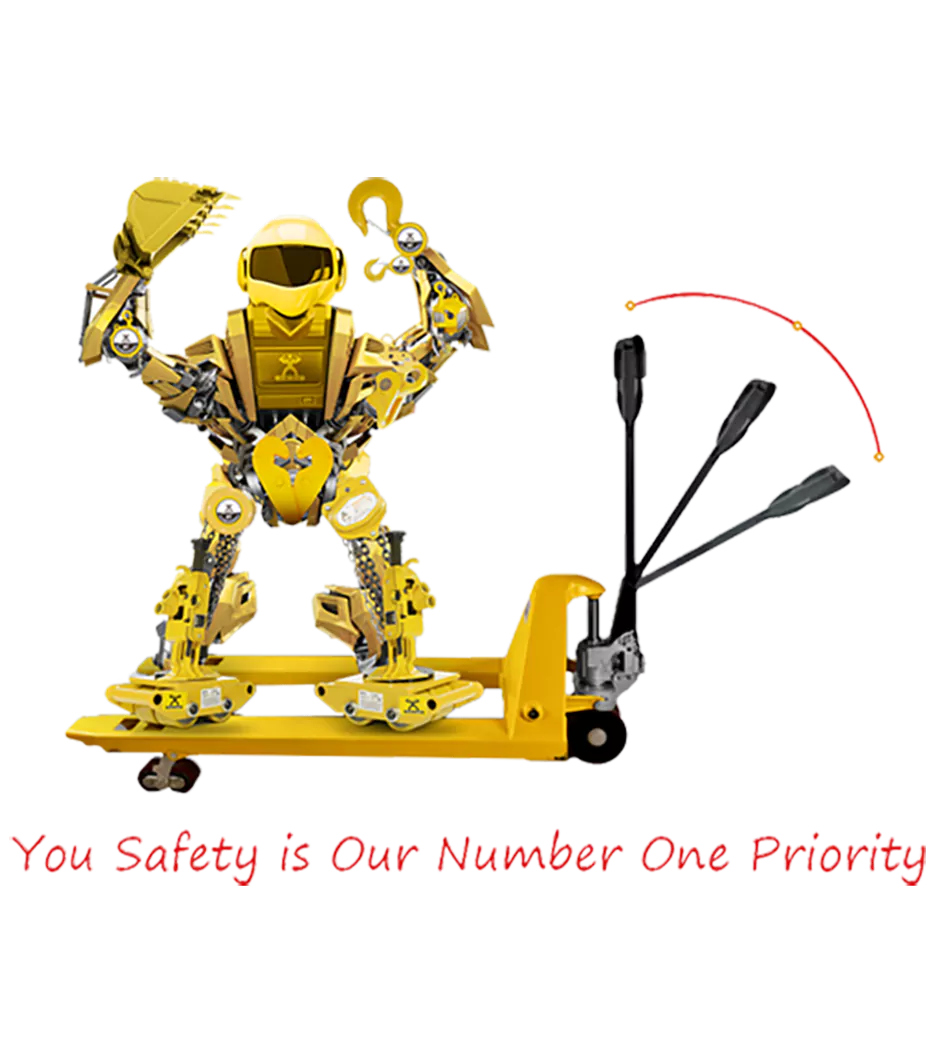Manual pallet trucks, also known as pallet jacks, are indispensable tools in the logistics and warehousing industry, designed to streamline the movement of heavy loads with ease and efficiency. At Gongyougroup, we understand the critical role that manual pallet trucks play in enhancing operational productivity and safety within warehouses, distribution centers, and manufacturing facilities.
This comprehensive guide aims to provide you with essential information about manual pallet trucks, covering their functionality, benefits, applications, maintenance tips, and more. Whether you’re new to using pallet trucks or seeking to optimize your material handling processes, Gongyougroup is here to empower you with knowledge and quality solutions tailored to your needs.
What is a Manual Pallet Truck?
A manual pallet truck, often referred to as a pallet jack, is a versatile handling tool used for lifting and transporting palletized loads within warehouses and other industrial settings.
How does a manual pallet truck function?
Manual pallet trucks operate by manually pumping a handle to lift the forks off the ground, allowing them to be inserted under a pallet. By pumping the handle further, the forks are raised, lifting the pallet off the ground. The truck is then maneuvered by pushing or pulling to transport the pallet to its destination.
Lowering the forks is achieved by releasing the handle slowly, allowing gravity to lower the load gently back to the ground.
What are the key components of a manual pallet truck?
Key components of a manual pallet truck include:
1.Forks: These are the arms of the truck that slide under the pallet to lift it.
2.Pump Handle: Used to pump hydraulic fluid to lift the forks and pallets.
3.Hydraulic System: Enables the lifting mechanism to raise and lower the forks smoothly.
4.Load Wheels: Located at the end of the forks to support and transport the pallet load.
5.Steering Handle: Allows for easy maneuverability and control when moving the pallet truck.
Understanding these components is essential for effectively using and maintaining a manual pallet truck, ensuring optimal performance and safety in material handling operations.
Why Choose a Manual Pallet Truck?
Manual pallet trucks offer several advantages that make them popular choices in warehouses and industrial environments. Firstly, they are cost-effective compared to powered alternatives, requiring no electricity or batteries for operation. This simplicity translates into lower initial costs and reduced maintenance expenses.
Additionally, manual pallet trucks are highly maneuverable, allowing operators to navigate narrow aisles and confined spaces with ease. Their ergonomic design also promotes efficiency by minimizing strain on operators during repetitive lifting and transporting tasks.
How does a manual pallet truck improve efficiency in warehouses?
In warehouses, efficiency is paramount to maintaining smooth operations and meeting production deadlines. Manual pallet trucks contribute to efficiency by speeding up the loading and unloading of goods. Their quick deployment and straightforward operation mean that workers can handle palletized loads swiftly, reducing downtime and optimizing workflow.
Moreover, manual pallet trucks enhance inventory management by enabling precise positioning of goods within storage areas, ensuring organized and accessible inventory.
What are the typical applications of manual pallet trucks?
In distribution centers and logistics hubs, manual pallet trucks are indispensable for moving goods from receiving areas to storage locations and onto shipping docks. They are also essential in retail environments for stocking shelves and handling bulk merchandise efficiently.
Manufacturing facilities utilize manual pallet trucks to transport raw materials and finished products between production stages, facilitating seamless workflow and production efficiency.
How versatile are manual pallet trucks in different industries?
The versatility of manual pallet trucks extends to industries such as agriculture, where they are used for handling bulk produce and livestock feed. In pharmaceutical settings, manual pallet trucks ensure the safe and hygienic transport of sensitive medical supplies and equipment.
Their adaptability makes them suitable for both indoor and outdoor use, providing essential support in a wide range of industrial applications.
How to Operate a Manual Pallet Truck Safely?
Operating a manual pallet truck safely is crucial to prevent accidents and ensure the well-being of operators and those around them.
What are the essential safety guidelines for operating a manual pallet truck?
First and foremost, operators should undergo proper training on the use of manual pallet trucks before operating them. This training should cover aspects such as understanding the controls, load capacity limits, and safe handling techniques. Before each use, operators should inspect the pallet truck for any damage or malfunction, including checking the wheels, forks, and hydraulic system.
It’s essential to ensure that the load is evenly distributed on the forks and secured with straps or chains if necessary. When lifting or lowering loads, operators should maintain clear visibility and avoid sudden movements that could destabilize the pallet truck or cause the load to shift.
How can operators avoid common accidents with manual pallet trucks?
Common accidents with manual pallet trucks often result from improper use or negligence. Operators should strictly adhere to designated pathways and avoid operating the pallet truck on uneven or slippery surfaces that could compromise stability. It’s important to keep both hands on the handle and maintain a steady pace while maneuvering the truck to minimize the risk of collisions or tipping.
Additionally, communication between operators and other personnel is crucial, especially in busy warehouse environments where pedestrian traffic is frequent. By following these safety guidelines and exercising caution at all times, operators can mitigate risks and ensure a safe working environment when using manual pallet trucks.
What Types of Manual Pallet Trucks Are Available?
Manual pallet trucks are available in several types, each designed to meet specific operational needs and environments. Understanding the different types can help you choose the right one for your material handling requirements.
Manual pallet trucks generally fall into these categories:
- Standard Manual Pallet Trucks: These are the most common type, featuring a single set of forks and designed for general-purpose lifting and transporting of palletized loads. They are versatile and suitable for a wide range of applications in warehouses, distribution centers, and retail settings.
- Low Profile Manual Pallet Trucks: These pallet trucks have a lower profile, allowing them to access pallets with lower ground clearance. They are ideal for handling pallets that sit close to the ground, such as those used in retail display areas or storage spaces with limited vertical clearance.
- High-Lift Manual Pallet Trucks: Also known as high-lift pallet jacks, these trucks are equipped with extended forks that can lift pallets to higher elevations. They are useful for tasks such as loading and unloading trucks, stacking pallets, or working with elevated storage racks.
- Rough Terrain Manual Pallet Trucks: Designed with robust construction and larger wheels, rough terrain pallet trucks can navigate uneven surfaces such as gravel, dirt, or rough pavement. They are commonly used in outdoor environments, construction sites, and agricultural settings where standard pallet trucks may struggle to operate.
- Narrow Aisle Manual Pallet Trucks: These pallet trucks are designed with a narrower width to maneuver through tight spaces and narrow aisles. They are particularly useful in confined warehouse environments where space optimization is crucial.
When selecting a manual pallet truck, consider factors such as load capacity, fork length, wheel type, and ergonomic features to ensure it meets the specific requirements of your application. Whether you need a standard pallet truck for everyday use or a specialized variant for unique operational challenges, Gongyougroup offers a range of reliable solutions to enhance your material handling efficiency.
What Maintenance Practices Are Important for Manual Pallet Trucks?
Proper maintenance is essential to ensure the longevity and optimal performance of manual pallet trucks, minimizing downtime and enhancing safety in material handling operations.
Regular inspections should be conducted to check for signs of wear and damage, focusing on key components such as the forks, wheels, hydraulic system, and handle mechanism. Any issues should be addressed promptly to prevent further damage or operational disruptions.
Routine lubrication of moving parts, including pivot points and wheel bearings, helps maintain smooth operation and prevents premature wear. Cleanliness is also crucial; keeping the pallet truck free of dirt, debris, and corrosive materials extends its lifespan and preserves its functionality.
Operators should be trained to recognize potential maintenance needs and perform basic troubleshooting, such as adjusting the hydraulic pump or replacing worn-out components. Following manufacturer guidelines for maintenance intervals and procedures ensures compliance with safety standards and maximizes the reliability of the equipment.
By implementing these maintenance practices, businesses can prolong the service life of their manual pallet trucks, optimize operational efficiency, and ensure a safe working environment for their personnel. Gongyougroup provides comprehensive support and guidance on maintenance to help clients achieve peak performance from their material handling equipment.
Conclusion
In conclusion, maintaining manual pallet trucks through regular inspections, lubrication, and cleanliness is crucial for ensuring their longevity and safe operation in industrial settings. By adhering to proper maintenance practices, businesses can minimize downtime, enhance efficiency, and extend the lifespan of their equipment. Gongyougroup is committed to providing high-quality manual pallet trucks and comprehensive support to meet your material handling needs.
For more information on our range of manual pallet trucks and to make a purchase, please contact Gongyougroup. Our team is ready to assist you in finding the right solution for your warehouse or industrial operations.

